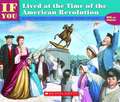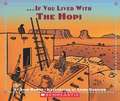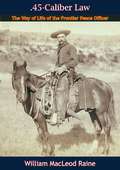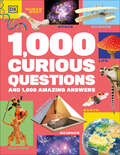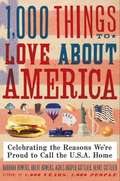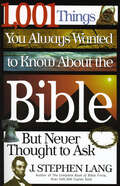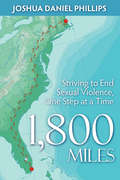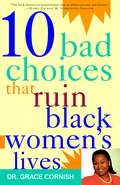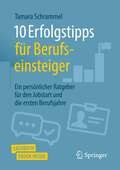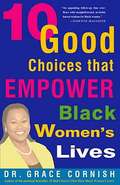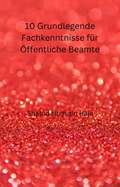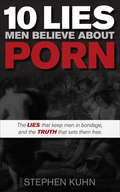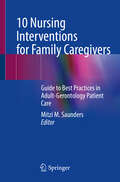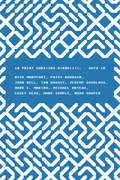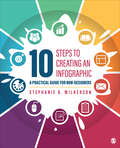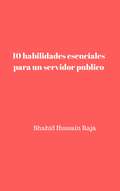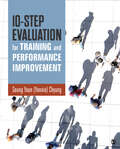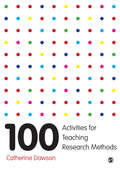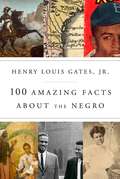- Table View
- List View
... If You Lived at the Time of the American Revolution
by Kay MooreWhat was life like during the American Revolution? How was it different if you were a Patriot or a Loyalist? How did life change after the war for each group?
...If You Lived with the Hopi
by Anne KammaThe history of the Hopi--which means "wise and beautiful people"--is explored through a series of questions and answers, such as "Would you live in a teepee?" and "What did girls have to learn?"
.45-Caliber Law: The Way of Life of the Frontier Peace Officer
by William MacLeod RaineWilliam MacLeod Raine was a small boy when he came to this country in 1881 from London, England, with his father and brothers. They settled in the Southwest, then a land lawless at times and places. Jesse James and Billy the Kid still terrorized the districts in which they lived. Most of the characters mentioned in this book were alive, and vigorously fighting for or against the law, while Raine was growing up.After his graduation from Oberlin College, in Ohio, young Raine returned to the West and lived there, although with frequent excursions to other parts of the world. He had been a newspaper reporter, an editorial writer, a university lecturer, and a contributor to magazines.For more than sixty years Raine was in and of the West. He knew personally some of the men whose adventures he tells of in this book, and from other of their friends and acquaintances he picked up details and anecdotes. Even in his fiction Raine was noted for the accuracy with which he portrays the spirit and the background of the locale in which his characters move.
1 Way 2 C The World
by Marilyn WaringMarilyn Waring is a truly absorbing figure known as a distinguished public intellectual, a leading feminist thinker, environmentalist, social justice activist, and for her early political career after election to New Zealand's parliament at age twenty-three. Assembling some of her most thought-provoking writings, 1 Way 2 C the World is a compelling collection of essays and reflections on many important issues of our time. Written in lively, crisp, and often humourous prose, Waring provides illuminating commentary on topics such as gay marriage, human rights, globalization, the environment, and international relations and development. Including accounts of being in India at the time of Indira Gandhi's assassination, and in Ethiopia's during the 1984 famine, Waring's vivid writing remains contemporarily relevant, while this collection includes recent writings on the post-9/11 world. Brimming with pieces that are essential reading for anyone concerned with the state of the world, 1 Way 2 C the World is bound to fascinate and inspire.
1,000 Curious Questions: And 1,000 Amazing Answers
by DKChildren ask the best questions—and this book has the answers!This timeless encyclopedia covers children's favorite topics, all in a friendly, easy-to-read Q&A format, perfect to dip into and browse. If your child is always asking questions, from "how do airplanes fly?" to "why do zebras have stripes?" and everything in between, this is the book for them. Shaped by children's interests and their insatiable curiosity, this is a book that children will read again and again.Alongside the children's questions and the expert answers are beautiful illustrations, photographs, and diagrams to bring every topic to life in rich detail and with perfect clarity. Question Everything! is essential reading to encourage curious kids to keep questioning the world around them.
1,000 Things to Love About America
by Brent Bowers Henry Gottlieb Agnes Gottlieb Barbara BowersFrom jazz to the Gettysburg Address to baseball to the White Castle hamburger-here are the 1,000 greatest things about America! The Pilgrims called their new nation "a shining city upon a hill." Abraham Lincoln praised it as "the last, best hope of mankind." In times of boom or bust, this remarkable land we know as America has been a beacon of hope illuminating the world. Now the authors of 1,000 Years, 1,000 People: Ranking the Men and Women Who Shaped the Millennium have teamed up once again to pay unabashed tribute to the greatness of our country-in a fascinating, fun, and informative celebration of the concepts, inventions, institutions, icons, history, social trends, geographical wonders, and consumer products that have made the U.S.A. such an awesomely amazing place! The Constitution Mount Rushmore Backyard Decks Monopoly Internet Shopping Duct Tape Yogi Berra The Super Bowl Ultimate Frisbee The Fifth Amendment The PTA The Indy 500 Freedom of the Press Hollywood Sesame Street ChapStick Poker The Wizard of Oz Fast Food The Cleveland Orchestra The Barn Owl Glacier National Park Jack Daniel's Old No. 7 Patchwork Quilts Soap Operas Joy of Cooking West Point A Streetcar Named Desire The Florida Keys The Red Cross Wikipedia Deodorant The Hubble Space Telescope Grizzly Bears The Beach Boys The White House Recycling Meat Loaf . . . and many, many more Things to Love About America!
1,001 Things You Always Wanted to Know About the Bible, But Never Thought to Ask
by J. Stephen LangFrom the author of the bestselling Complete Book of Bible Trivia, fascinating facts from the social and cultural history of the Bible.With 1,001 Things You Always Wanted to Know About the Bible but Never Thought to Ask discover how the Bible has impacted language, U.S. history, worship, music, art, literature, movies, and theater; how the Bible was passed down to us; plus every key person, place, event, and idea in the Bible. Bestselling Bible trivia author J. Stephen Lang’s intriguing tidbits will leave you yearning to know more about the world’s most fascinating book. Whether you are a seasoned Bible student or just getting started, you will enjoy reading this invaluable resource.
1,800 Miles: Striving to End Sexual Violence, One Step at a Time
by Joshua Daniel Phillips“We must be actively against instead of passively for sexual violence.” - 1,800 Miles Sexual violence is a cultural issue that will not go away just because we ignore it. Three college friends understood this and decided to do something. With few resources and little funding, they headed to Miami in the summer of 2008 and were ready to walk all the way to Boston in an effort to raise awareness about sexual violence. Carry their only possessions on their backs and never knowing where they would be sleeping at the end of each day, they slowly made their way up the East Coast. However, they did have their set backs as certain days included being chased by dogs and walking numerous miles through the rain. Despite these adversities, the three walkers continued forward for three long, hot summer months. Along the way, they talked to the media, met survivors, and even spent the night with a Senator. 1,800 Miles recounts those stories both humorous and heartbreaking from the walk and is sure to be a story that inspires other social activists to start moving forward – one step at a time.
10 Bad Choices That Ruin Black Women's Lives
by Grace CornishIn 10 Bad Choices That Ruin Black Women's Lives, relationship expert Dr. Grace Cornish writes a lively, practical, provocative guide for black women everywhere who want to shed the duds and find the studs who will treat them with respect.According to Dr. Cornish, six out of every ten black women are either in bad relationships, share a man, or are celibate. The problem is not the women themselves but the bad choices they keep making. In her frank and refreshing new book, Dr. Cornish speaks to unique aspects of the African American female psyche by targeting ten of the most common and foolish choices black women make in their lives regarding men, and how they can correct these problems, including:Sisters Dissin' SistersNo Money, No HoneyExchanging "Sexual Dealings" for Loving FeelingsLoving the "Married Bachelor" Emotional Dependency Plus Unplanned Pregnancy. . . and much more.Relying on case studies, interviews, and letters she has received, Dr. Cornish gets to the heart of the matter by illuminating why black women, no matter how smart, savvy, and successful, continue to lose at the dating game, and how they can face, erase, and replace the problems that have kept them from finding true love.Why are so many black women alone or in bad relationships?Why do sisters unconsciously use weight, fear, finance, status, skin color, and other barriers to keep themselves from getting the love they want?Why do black women think that there are no eligible black men left--that the good ones are married, dead, or not yet born, and the rest are gay, bisexual, or interested only in white women?From the Hardcover edition.
10 Conversations You Need to Have with Your Children
by Shmuley BoteachWhy do I have to repeat everything? Why does every conversation end in an argument? Communicating with our children. Conversing. Connecting. When did it become so difficult? And how do we begin to change it for the better? This book was designed to help parents answer these important questions, and it is based on two fundamental ideas: The first is that there are no bad children, and no deliberately bad parents -- but that sometimes, despite the best of intentions on both sides, there can be bad relationships between parents and children. The second is that, as parents, we must do everything we can to save those relationships, to reach out and really communicate with our children, because it is only through talking to them that we can create an environment for inspiration and change. In this compelling book, Shmuley Boteach, passionate social commentator and outspoken relationship guru, walks you through the critical conversations, including: cherishing childhood; developing intellectual curiosity; knowing who you are and what you want to become; learning to forgive; realizing the importance of family and tradition; being fearless and courageous. As a father of eight, Rabbi Shmuley speaks from a wealth of experience. He has written a book for parents of children of all ages, from toddlers, who are just beginning to become aware of the world around them, to adolescents, who must learn to navigate all sorts of tricky social and academic pressures. 10 Conversations will help you stay connected to your children so that they develop the kind of strong moral character that leads to rich, meaningful lives.
10 Erfolgstipps für Berufseinsteiger: Ein persönlicher Ratgeber für den Jobstart und die ersten Berufsjahre
by Tamara SchrammelDieser Ratgeber vermittelt die 10 wichtigsten Erfolgsfaktoren rund um den Berufseinstieg und die ersten Berufsjahre. Besonders wertvoll sind die persönlichen Erfahrungen der Autorin, die angesichts der Erfolge und Misserfolge ihrer eigenen ersten Berufsjahre in großen internationalen Unternehmen ein Fazit zieht und ihre Erkenntnisse und Beobachtungen offen teilt. Mit diesem Wissens- und Erfahrungsvorsprung gelingt es jedem, den Karrierestart erfolgreich zu meistern und die eigenen beruflichen Weichen von Anfang an richtig zu stellen. Der Leser profitiert in diesem Buch von Insiderwissen und Karriere-Alltagswissen, dass so in Schule, Ausbildung und Studium nicht gelehrt wird. Ein Must-read für den erfolgreichen Karrierestart.
10 Good Choices That Empower Black Women’s Lives
by Grace Cornish"It's time to take back your power and your life--take it back from the bad relationships, bad careers, bad investments, bad company, and bad memories. It's time for you to live a fuller, happier, more productive, and wholesome life. This is your time to claim your blessings. God has given you a choice. Choose wisely, sis--choose to win, and enjoy every moment of it." With her national bestseller,10 Bad Choices That Ruin Black Women's Lives, beloved television personality, lecturer, and author Dr. Grace Cornish wrote a self-help classic for black women who wanted to face and erase the relationship problems. Now, in her 10 Good Choices That Empower Black Women's Lives, Dr. Grace takes readers beyond healing just their romantic relationships--she's ready to show black women how to incorporate new, empowering, good choices into every aspect of their lives. Inspiring and insightful, this is Dr. Grace's tried-and-true prescription for finding the right balance between work, love, and spirituality. From "Trust Your Intuition" to "Taking Calculated Chances" and "Embracing the Skin You're In," Dr. Grace outlines ten positive choices that will help black women move onward and upward in their personal and professional lives. Full of first-person anecdotes from Dr. Grace's patients, friends, and fans, this is a real book about real people in tough situations and the choices they have made that led to renewed success, happiness, and peace of mind. With her trademark brand of smart, sympathetic, sister-to-sister counseling, Dr. Grace Cornish's10 Good Choices That Empower Black Women's Lives is destined to become a classic of self-help for African-American women of all ages and backgrounds.
10 Grundlegende Fachkenntnisse für Öffentliche Beamte: Ein Handbuch
by Shahid Hussain RajaDer Beruf des öffentlichen Bediensteten ist einerseits eine Ehre und ein Privileg, andererseits aber auch eine große Verantwortung. Die gewissenhafte Erfüllung Ihrer Pflichten erfordert, dass Sie bei der Erbringung von Dienstleistungen sehr effektiv, bei der Ausführung effizient und im Umgang mit der Öffentlichkeit ehrlich sind. Dieses kurze Handbuch ist ein Versuch, die Fähigkeiten aufzulisten, die Ihnen helfen können, sich in diese Form zu bringen. Glücklicherweise können all diese Fähigkeiten, die Sie bei der Erfüllung Ihrer Aufgaben benötigen, erlernt werden und sind nicht vererbbar. Sie zu erlernen, erfordert lediglich vollen Einsatz und engagierte Bemühungen.
10 Lies Men Believe About Porn: The Lies That Keep Men in Bondage, and the Truth That Sets Them Free
by Stephen KuhnStatistics show roughly 50 percent of men struggle with a pornography addiction; boys are being exposed to porn at younger ages each year; and technology now provides an environment of access where you no longer need to search for porn-it comes looking for you. Despite these facts, this epidemic is largely being ignored. When it is addressed, the message is always "Try harder, get an Internet filter, be a better man." At best, this message merely addresses the symptoms of a much deeper issue. At worst, it feeds the lies men believe that have contributed directly to their addiction. 10 Lies Men Believe about Porn uncovers the true cause of pornography addiction, exposes the lies that are trapping men in their bondage, and shows them the biblical path to true and lasting freedom.
10 Nursing Interventions for Family Caregivers: Guide to Best Practices in Adult-Gerontology Patient Care
by Mitzi M. SaundersThis book shines a light on the family caregiver, who cares for their loved one when nurses are not involved. It guides nurses to identify and partner with family caregivers and infuses confidence and desire to support them. The unique feature of this book is to provide nurses with the ability to see themselves in the role of supporting the family caregiver in their own practices with older people. Written in story form with teachable moments interjected within, it develops on the struggles and needs of the family caregiver. This book draws the nurse closer to the family caregiver using empathy, compassion, and competency; it elaborates on best practices to support key interventions that every professional nurse can do. Narrowing to 10 key nursing interventions helps establish the scope of family caregiver nursing care. Much of family caregiver care stems from compassion and “being with” and supporting the patient through difficult times. This is both an art and a skill. This much needed book guides nurses towards the family caregiver, the silent patient.
10 PRINT CHR$ (Software Studies)
by Nick Montfort John Bell Ian Bogost Patsy Baudoin Jeremy DouglassA single line of code offers a way to understand the cultural context of computing.This book takes a single line of code—the extremely concise BASIC program for the Commodore 64 inscribed in the title—and uses it as a lens through which to consider the phenomenon of creative computing and the way computer programs exist in culture. The authors of this collaboratively written book treat code not as merely functional but as a text—in the case of 10 PRINT, a text that appeared in many different printed sources—that yields a story about its making, its purpose, its assumptions, and more. They consider randomness and regularity in computing and art, the maze in culture, the popular BASIC programming language, and the highly influential Commodore 64 computer.
10 Steps to Creating an Infographic: A Practical Guide for Non-designers
by Stephanie B. WilkersonThis book provides step-by-step guidance for developing high-quality infographics. Practical in its approach, 10 Steps to Creating an Infographic: A Practical Guide for Non-designers outlines a user-friendly process for developing infographics with a clearly defined purpose and powerful message. The book’s "how-to" approach makes infographic creation accessible for anyone who doesn’t have a background in graphic design or a budget for a graphic designer. Author Stephanie B. Wilkerson breaks down the complex task into a series of steps and models each step through a book-long example of the evolution of an infographic. Through this, and other examples presented throughout the book, readers will learn about infographic best practices and tips, as well guidance for avoiding design pitfalls.
10 Steps to Creating an Infographic: A Practical Guide for Non-designers
by Stephanie B. WilkersonThis book provides step-by-step guidance for developing high-quality infographics. Practical in its approach, 10 Steps to Creating an Infographic: A Practical Guide for Non-designers outlines a user-friendly process for developing infographics with a clearly defined purpose and powerful message. The book’s "how-to" approach makes infographic creation accessible for anyone who doesn’t have a background in graphic design or a budget for a graphic designer. Author Stephanie B. Wilkerson breaks down the complex task into a series of steps and models each step through a book-long example of the evolution of an infographic. Through this, and other examples presented throughout the book, readers will learn about infographic best practices and tips, as well guidance for avoiding design pitfalls.
10 gritos contra la gordofobia
by Magdalena Piñeyro Arte MapacheUna guía para liberarse de los cánones de belleza establecidos, por la cofundadora de Stop Gordofobia. «Estuve casi treinta años callada, habitando mi cuerpo llena de dolor. Pero en el camino de la vida me encontré con el activismo gordofeminista que me llevó a transformar el dolor en rabia y la rabia en grito.» Alguien que grita es alguien que ya no puede más, que necesita que lo escuchen. Y romper el silencio es el objetivo de estos diez gritos. Juntos forman una guía básica en contra de los cánones de belleza establecidos, de la sociedad gordófoba y de la discriminación por peso que se cuela en las aulas, en el trabajo, en la moda y en todos los ámbitos de la sociedad. 10 gritos contra la gordofobia es un libro imprescindible para entender que «gorda» no es un insulto, un libro para empoderarnos y aprender a querer nuestro cuerpo tal como es.
10 habilidades esenciales para un servidor publico
by Shahid Hussain Raja Juan Vicente PereiraLa idea para escribir este corto tratado sobre habilidades esenciales para cualquier servidor público que le permita realizar sus deberes efectivamente y eficientemente vino a mi mente mientras servía como instructor en jefe en el personal del colegio administrativo de Pakistán, ahora conocido como Escuela de Políticas Públicas, Lahore. Establecido en 1950, es la primera institución en impartir entrenamiento a los oficiales gubernamentales experimentados para su posible inducción dentro del top de cuadros administrativos del servicio de gobierno. En estas altas posiciones, están los depósitos de la memoria institucional y conocimiento acumulado, son responsables por dar contribuciones a los representantes elegidos para la formulación de políticas públicas e implementación de las políticas aprobadas.
10-Step Evaluation for Training and Performance Improvement
by Seung Youn ChyungWritten with a learning-by-doing approach in mind, 10-Step Evaluation for Training and Performance Improvement gives students actionable instruction for identifying, planning, and implementing a client-based program evaluation. The book introduces readers to multiple evaluation frameworks and uses problem-based learning to guide them through a 10-step evaluation process. As students read the chapters, they produce specific deliverables that culminate in a completed evaluation project.
10-Step Evaluation for Training and Performance Improvement
by Seung Youn ChyungWritten with a learning-by-doing approach in mind, 10-Step Evaluation for Training and Performance Improvement gives students actionable instruction for identifying, planning, and implementing a client-based program evaluation. The book introduces readers to multiple evaluation frameworks and uses problem-based learning to guide them through a 10-step evaluation process. As students read the chapters, they produce specific deliverables that culminate in a completed evaluation project.
100 Activities for Teaching Research Methods
by Catherine DawsonA sourcebook of exercises, games, scenarios and role plays, this practical, user-friendly guide provides a complete and valuable resource for research methods tutors, teachers and lecturers. Developed to complement and enhance existing course materials, the 100 ready-to-use activities encourage innovative and engaging classroom practice in seven areas: finding and using sources of information planning a research project conducting research using and analyzing data disseminating results acting ethically developing deeper research skills. Each of the activities is divided into a section on tutor notes and student handouts. Tutor notes contain clear guidance about the purpose, level and type of activity, along with a range of discussion notes that signpost key issues and research insights. Important terms, related activities and further reading suggestions are also included. Not only does the A4 format make the student handouts easy to photocopy, they are also available to download and print directly from the book’s companion website for easy distribution in class.
100 Amazing Facts About the Negro
by Henry Louis GatesThe first edition of Joel Augustus Rogers’s now legendary 100 Amazing Facts About the Negro with Complete Proof, published in 1957, was billed as “A Negro ‘Believe It or Not.’” Rogers’s little book was priceless because he was delivering enlightenment and pride, steeped in historical research, to a people too long starved on the lie that they were worth nothing. For African Americans of the Jim Crow era, Rogers’s was their first black history teacher. But Rogers was not always shy about embellishing the “facts” and minimizing ambiguity; neither was he above shock journalism now and then. With élan and erudition—and with winning enthusiasm—Henry Louis Gates, Jr. gives us a corrective yet loving homage to Roger’s work. Relying on the latest scholarship, Gates leads us on a romp through African, diasporic, and African-American history in question-and-answer format. Among the one hundred questions: Who were Africa’s first ambassadors to Europe? Who was the first black president in North America? Did Lincoln really free the slaves? Who was history’s wealthiest person? What percentage of white Americans have recent African ancestry? Why did free black people living in the South before the end of the Civil War stay there? Who was the first black head of state in modern Western history? Where was the first Underground Railroad? Who was the first black American woman to be a self-made millionaire? Which black man made many of our favorite household products better? Here is a surprising, inspiring, sometimes boldly mischievous—all the while highly instructive and entertaining—compendium of historical curiosities intended to illuminate the sheer complexity and diversity of being “Negro” in the world.(With full-color illustrations throughout.)
100 Amazing Facts About the Negro with Complete Proof: A Short Cut to The World History of The Negro
by J. A. RogersWhite supremacy-busting facts that ran in the black publication the Pittsburgh Courier, written by the renowned African American author and journalist.First published in 1934 and revised in 1962, this book gathers journalist and historian Joel Augustus Rogers’ columns from the syndicated newspaper feature titled Your History. Patterned after the look of Ripley’s popular Believe It or Not the multiple vignettes in each episode recount short items from Rogers’s research. The feature began in the Pittsburgh Courier in November 1934 and ran through the 1960s.“I have been intrigued by this book, and by its author, since I first encountered it as a student in an undergraduate survey course in African-American history at Yale . . . Sometimes, [Rogers] was astonishingly accurate; at other times, he seems to have been tripping a bit, shall we say.” —Henry Louis Gates, Jr., The Root“Rogers made great contribution to publishing and distributing little know African history facts through books and pamphlets such as 100 Amazing Facts About the Negro with Complete Proof and The Five Negro Presidents . . . The common thread in Roger’s research was his unending aim to counter white supremacist propaganda that prevailed in segregated communities across the United States against people of African descent.” —Black History Heroes
